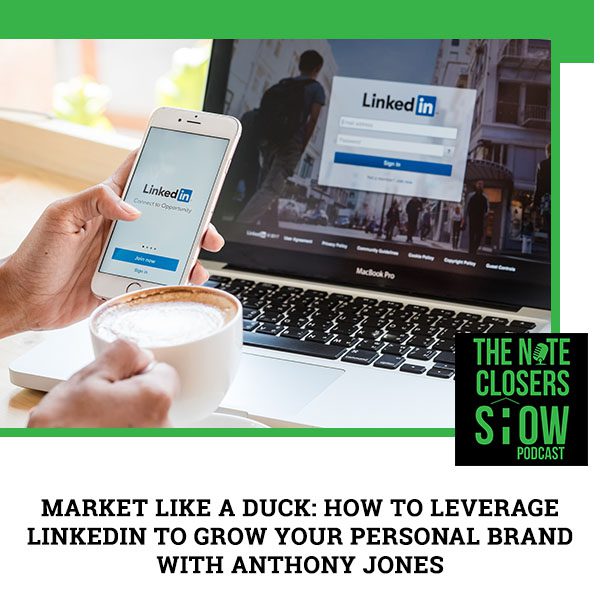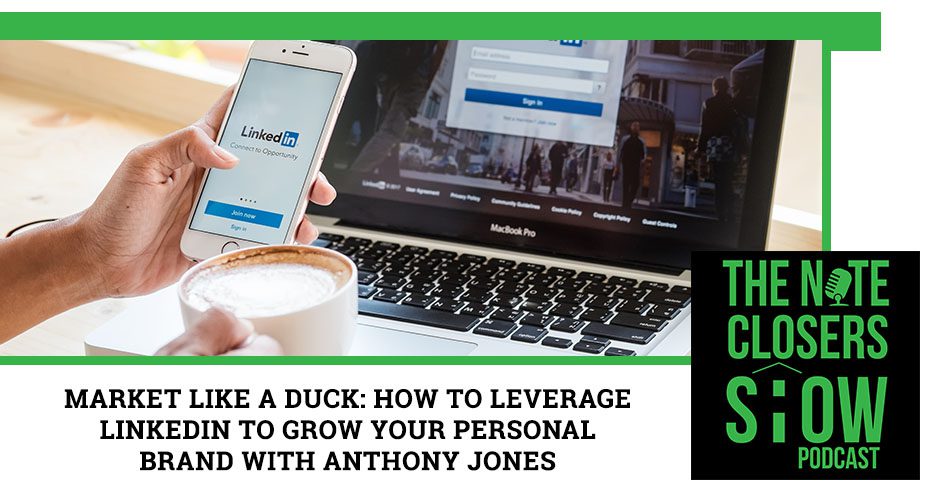
Social media platforms are very important in marketing and LinkedIn is way up there on top of the list. In this episode, Scott Carson talks with Anthony Jones from Ducks Unlimited about how he is using the power of LinkedIn to market the message and conservation issues for his business. Anthony Jones is the Director of Digital Media & Marketing for Ducks Unlimited, the world’s leader in wetland and waterfowl conservation. He also shares his best practices and the biggest opportunities for business owners and entrepreneurs to help grow their market and influence the social media platform with regular (and simple) content. He provides basic dos and don’ts, especially for someone who wanted to start building his brand. Tune in to help scale your business to the next level!
—
Watch the episode here
Listen to the podcast here
Market Like a Duck: How To Leverage LinkedIn To Grow Your Personal Brand With Anthony Jones
This is Anthony Jones with Ducks Unlimited. I’m happy to join the show. We’re going to talk about Ducks Unlimited and how we’re using social media and LinkedIn in particular as part of our marketing and fundraising efforts. We’re also going to talk about using LinkedIn to build your personal brand and how you can become more active on the profile.
—
I’m jacked up to be with you. I’ve got a very special guest. I think you’re going to learn a lot of. This guy represents the world’s leader in wetlands and waterfowl conservation. For many years, he’s led the team responsible for the organization’s website, social media, email marketing, online fundraising and mobile application. He is also a highly recognized face on LinkedIn with over 35,000, 36,000 connections on LinkedIn.
He’s in that top 1% of the 1%. For several years, he’s worked to build his brand through a unique content marketing strategy and he loves to share that across the board. I’m talking about the head honcho, the Head Duck, the man, the myth, the legend, Mr. Anthony Jones, joining us from Mississippi. What’s going on, Anthony? How you’re doing?
I’m great. I got to correct you. I’m far from the Head Duck but I appreciate the title. I’m a middle duck here.
The Head Marketing Duck is what I would say.
We’ll go with that.
Anthony and I met, there was a conference here in Austin that I went to SPINCon. It was the NIO summit. It’s a Nonprofit Innovation & Optimization Conference. It’s a marketing convention. Anthony was up there sharing his secrets of how he’s used LinkedIn and with his team at Ducks Unlimited to do an amazing job of getting the word out on what they’re doing.
We connected. He was like, “If you’re listening to this, you know how valuable LinkedIn. You know how I’m a big advocate for it.” I was like, “We got to get this guy on.” We exchanged some messages and I’m honored to have him here. Anthony, I think you shared an interesting story about how you got started into this and how you probably doubted yourself a little bit. Do you want to share your origin story a little bit?
I first started on LinkedIn back in 2007. I created a profile, I uploaded a picture, a few sentences in the About section and that was pretty much it. I connected with a few dozen people that I personally knew, and I never thought of it unless I was looking to hire someone for my team. That’s how I used LinkedIn until about years ago. It was around the time when Microsoft purchased LinkedIn. I came across an article that talked about how fast the network was growing and that a lot of people were starting to use it to build their personal brands. That was the first time I’d ever heard the term personal brand before. That piqued my curiosity.
I started coming back to the site maybe once or twice a week but paying attention to the content. Every time I did, I had the exact same reaction like, “This is the most boring crap I’ve ever seen.” Job postings that had no relevance to me. Links to corporate press releases and bizarre sales pitches in my inbox. I figured one way to change that was to reach out to new people, to expand my network, new faces, new perspectives and new content. Over time, I started to get a better quality news feed. I started to see a lot of people doing something that had never been done on LinkedIn.
They were showing their personality. They were using humor. They were being themselves. That’s when I started to realize what building a personal brand was all about. This whole idea of people connecting with people, not people connecting with a lot of the corporate stuff that people commonly put out on LinkedIn by default. I’ve taken that approach over the last few years. I’ve tried to be authentic, add some value in terms of sometimes daily humor, sometimes lessons that I’ve learned in my career. It started out as a hobby, now it’s grown into some other opportunities, speaking at NIO. That’s how I got started with LinkedIn.
I imagine you had some fears, initially, you shared some funny videos of the thoughts that go through people’s heads when they’re starting to start marketing as a brand. I think LinkedIn is one of the better brands out there, especially when you look at all the turmoil and negativity on some of the others, Instagram, Facebook, and all that stuff there. LinkedIn, we’ve been lucky not to have a lot of negativity but besides what’s going on here, do you want to walk through that mental?
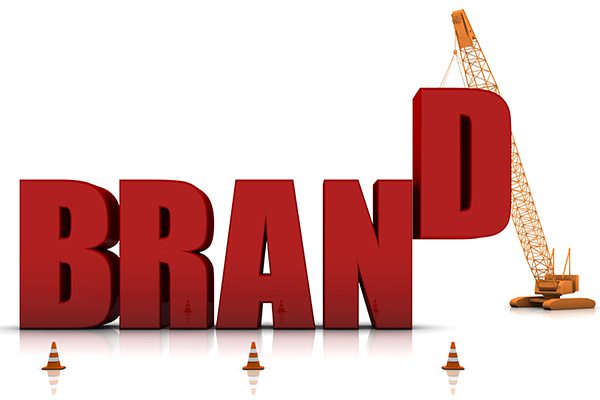
LinkedIn Marketing: Building a personal brand is all about people connecting with people, not people connecting with a lot of the corporate stuff that people commonly put out on LinkedIn by default.
If you think about all the turmoil that social media networks have had, going back to the 2020 election, LinkedIn is the only network that has stayed out of the fray. They’ve remained solid. They do what they do. It doesn’t have the confrontational aspect that so many other social networks have had. It represents a great opportunity for people. This is something that I talked about at the conference. There are 700 million LinkedIn users across the globe but only 3 million are posting content on a regular basis. That’s less than half of 1%.
I like to call this the good old days of LinkedIn because the platform is growing day by day but it is not over saturated with content like Facebook, Twitter and Instagram. If you’re not paying to run ads, your content is not going to be seen at any level of scale. That’s not the case on LinkedIn now because there are so few content creators in comparison to the whole universe out there. I like to tell people, “Now is the golden time to have your content be seen, have your voice heard and build your brand.”
I believe everybody’s got their voice. We don’t need a million Mark Zuckerbergs, Gary Vaynerchuks or Scott Carsons. We don’t need one more individual but that individual would be you to share what you’re doing. People like brands but I think they build rapport with personalities and people.
That’s the number one thing that I advise when I’m doing coaching sessions or giving presentations. The first thing that I tell people is to stop overthinking the content. Post content that allows your network to learn about you as a person. If you do nothing but that on a regular basis over time, people are going to start to feel like they know you. They trust you. When you do start sharing career-related content or advice, they’re going to listen to you because they feel like they have some level of credibility that you’re not going to get if you start sharing content left and right that has no relevancy or doesn’t speak to who you are as a person.
You also shared some ah-has at NIO too about what you have found and some of the different things you post besides put posts and personally, less than 1% of all LinkedIn users are doing stuff on a regular basis, let alone a daily basis. You also shared some other things that maybe surprise people. LinkedIn is such business-oriented stuff, the personal stuff but also, I think posting on the weekends too does well for you.
I saw a stat, 60% of LinkedIn users are checking in on the weekends but only 20% are posting. That’s a huge opportunity. That’s a small little nugget but look for time and opportunities when others aren’t posting, that’s a great opportunity for your content to be seen by even more people than it would otherwise.
With you handling and doing a lot of personally, how’s that transitioned into what you’re doing for Ducks Unlimited? How is that gone from, your house or your office to the boardroom or everything in full effect there at Ducks Unlimited?
For the last couple of years, I’ve done a lot of personal branding development to learn the platform and figure out what works and what doesn’t work. Years ago, I had a meeting with my team. We specifically talked about, not the organization because I’m not the CEO. I’m just digital marketing, “How can our team start to leverage LinkedIn to put a positive light on what we do to showcase and highlight the great work that my team is doing?” We came up with a team hashtag. It’s #DucksUnlimitedDigital.
I encouraged my team to post as often as they were comfortable. When they posted something about their job, about a project or something fun behind-the-scenes that is taking place here at the office, to use that hashtag in their posts, we’ve had a lot of staff that has done that. Some people are going to be more apt to post than others naturally. We’ve had a number of posts that have gone up over the last few years. Everything from marketing tips, lessons learned, a video of a dog or lamb running up and down the hall because that’s part of our organization’s culture. I want to show that.
If you look at it from an organizational standpoint, I like to say that, I want people to see the content that we post and want them to want to work for Ducks Unlimited because of what they see. I want them to work for my team because of what they see, our team posts, showing our value, and our culture. It’s something that we’re still building. We are discussing broadening that out to the entire organization. I had a discussion with my boss about that. On the organization scale, that’s still to be determined. That’s how I’ve taken it with my team, as a pilot project to get that off the ground.
It goes back to that whole idea. People connect with people a lot better than what you’re putting out on your corporate LinkedIn page. Those corporate pages are important. You need to be putting out content but it’s the individuals that people are more likely to engage with, leave comments on, then a press release or something like that, that your company’s putting out.

LinkedIn Marketing: You have to write engaging content in your social media posts to attract people.
It adds the heartbeat to an organization. I like what you said there about you wanting people to see what’s going on and want to come work or interact with you. What are some things that may surprise you that maybe some things you’ve done in the past, I hate to say it but that may have been a dud instead of being successful with Ducks Unlimited Digital?
I can’t think of a dud. Going back to what I referenced earlier, some staff are going to be more apt to do it because they’re naturally social media savvy. They’re out there. Others are a little more private. That’s something that you have to accept and encourage your staff to be as active as they’re comfortable. As I also mentioned at the summit, every organization needs a social media policy. It should have general guidelines, guide rails as to what is acceptable, what’s not acceptable.
It should not be so long that it stifles creativity. I like to say, if it’s longer than one page, it’s probably too much. As I’ve also said before, one of the biggest barriers people have to post or being active on LinkedIn and all is they don’t know what’s appropriate. The position that I’ve taken is I don’t post anything divisive or polarizing. I stay away from politics. More importantly, I don’t post content that would conflict with my company’s core values. That’s the bottom line. That’s the common-sense approach that I’ve taken and that I recommend other states as well.
It’s a whole bartender method. Don’t talk religion or politics most of the time and you’ll be okay. How important is a video been with LinkedIn? I got to prefer LinkedIn. I’m pretty excited. LinkedIn dropped the ball with COVID of not being more open to releasing more LinkedIn Live features to more creators out there. The ten minutes is okay. It’s great for shorts but a lot of people like podcasts that are doing longer forms of content with videos, webinars and training, I think LinkedIn missed out on a lot of stuff. What’s your take and how much are you using video with what you’re doing?
LinkedIn was late to the game overall when it comes to video. They did not allow native video on the platform until 2017, 2018. Using video on the platform can be a game-changer. It can be the fastest way to build your personal brand. It’s the toughest but it’s the quickest way. It’s because it’s you talking to your network. It allows you to build a sense of trust and credibility with people much faster than any other media, text-only or photo posts. It’s more authentic and genuine. A lot of people are skeptical or nervous to even begin using LinkedIn videos. Once you do, and get enough practice out there, it becomes a lot more comfortable.
It’s something that I’m still working to improve. I don’t put out near as many videos as I would like. To the point of LinkedIn Live, you’re exactly right. They’ve been slow getting that out. I applied for LinkedIn Live years ago and they denied me 2 or 3 times. They’re opening it up to pretty much everyone. I have used it twice so far and I’m still trying to figure out how to incorporate that in. A lot of people are using LinkedIn Live and they’re doing it well. They’re bringing in other experts in the field, having conversations or an ask me for anything type of session on the fly. I’ve seen a lot of good uses of it. That’s something that I hope to take advantage of more in the coming year.
Same here. I’m like, “I’ve been waiting for this. Let’s figure how to incorporate it in with everything.” How much do you plan out some of your posting strategies? Maybe not just a LinkedIn but other things with you and your team. Do you guys have a year-long marketing calendar or a quarter calendar? What’s your overall line game plan?
As far as the organization, Ducks Unlimited goes, we do have a marketing plan. We do have a social media schedule that is extremely complex. We’re on every channel. We’re posting multiple times a day. We have everything from conservation to fundraising to event promotion. We’re juggling a lot of different priorities and messages at one time.
The team does a fantastic job of managing that. From a personal LinkedIn standpoint, I will tell you that I don’t have a written schedule or calendar that I keep to. I think it’s great for a lot of people who are better organized than I am. The organization is not one of my strong suits. Most of the content that I put out is the day off on the fly.
Whatever I’m thinking of that day. I may shoot a video and work on it for a week and understand it’ll be a week or two before I put it out there. A lot of the content that I make is whatever is in my mind that day. There are also plenty of days where I have good intentions of posting but it’s like I’m looking at this blank wall. There is zero creativity and ideas. That happens to everyone. What I like to do is keep up a running list of post ideas on my desktop.
I’ve got a folder on my phone where I’ve got LinkedIn ideas, where if I see something while I’m driving to work, I might snap a picture, drop it in that folder. I may not know what the post is going to be at the time but I might flush that out later into a post. Keep up a running list of ideas so that you’re on the lookout for content on those days where you’re looking at that blank wall with no creativity that day.
The other coffee hasn’t kicked in to create a folder yet for that. I think everybody goes through that. Many people who aren’t embracing and marketing think that’s the kiss of death and they think of that initially. I like what you said, you come up with ideas as your surroundings. For me, it’s the movies, it’s a bit of pop culture to bring in a bit internally. It’s also when I see a great sign, a great show or something else, “I could use that.” Like the James Bond thing, we’ve got a whole new thing coming up. He says, “No time to die. No time to invest.”
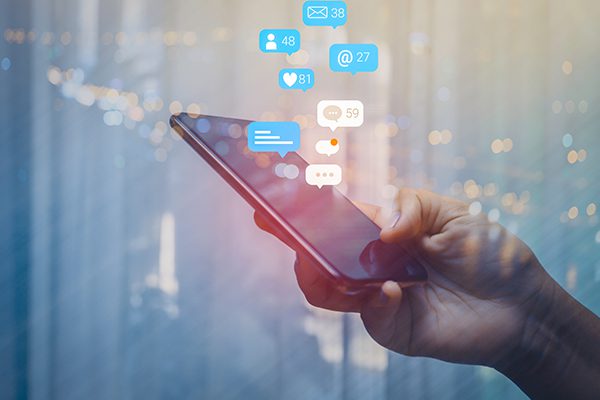
LinkedIn Marketing: If you’ve got a post that did well, bring it back four or five months later because a lot of people aren’t going to remember, and if they do remember it and they engage with it, they’ll probably engage again.
The fun stuff that goes along with it. That individuality that you share helps you stand out so much versus like you said, that robot auto-post same in, same out vanilla. What’s one post that you shared that you were surprised the heck out of? That you got so many responses or feedback from people that you had a chuckle about it.
There have been quite a few. I’m trying to think of one in particular. I’ll tell you the most popular post I’ve ever made. It was a bit of humor that says, “If you connect with me and send me a cold sales pitch, immediately afterward, there is a 200% chance I’m never going to respond. Slow your roll there.” I followed that with a bunch of hashtags. That reached 158,000 people that had thousands of likes and comments. What I realized about that was it was relatable. Everyone can relate. Everyone hates the cold sales pitch. I have re-posted that 3 or 4 times. Every time, it has phenomenal reach and engagement.
A tip that I like to share with people is if you’ve got a post that did well, bring it back 4 or 5 months later because one, a lot of people aren’t going to remember it. Two, if they do remember it and they engage with it, they’ll probably engage again. Three, you’ve probably added a lot of new connections or followers since then. It’s brand new to them. Putting out content that’s relatable and human that’s what’s going to get the most engagement time in and time out.
That’s a great one being able to recycle it because we all add new connections. Are there any tools that you’ve used like Sales Navigator, LeadFuze or Octopus CRM to help you grow your connections on LinkedIn?
I’ll give you a couple of tools that I use and recommend. LinkedIn is great and that it gives you some analytics. It gives you a total reach and that thing but they don’t have a comprehensive dashboard. There is a company called Shield app. It’s ShieldApp.ai. It’s a web service, not a mobile app that you can subscribe to. It’s got all of your posts going back to the beginning of time. All the metrics. You can easily find a post by doing a search. It’s probably the most important tool that I’ve used.
If you are a data geek like I am, you can look at the metrics, what posts had the most engagement and had the most used? What was it about that post that caused it to do well? What time of day, what day of the week? A lot of insights you can glean from that. The other app that I use for videos and highly recommend. There are two. One is called InShot, it’s a free video editing app. It’s intuitive, easy to use, and great for people like me. The third one, this is also related to videos, it’s called the Teleprompter for Video app. I showed this one at the conference.
It’s a lifesaver because you can load your script directly into it or talking points. It even scrolls the text right near the top of the camera lens, so you never lose eye contact with your audience. It looks and feels natural. When I first started out, I would completely forget. I’d be halfway through my mental script, I’d go blank and I have to start again or I’d have to tape a piece of paper next to the camera with some bullet points. The Teleprompter app has been a game-changer for me. Those are the three tools and apps that are the most useful for me.
I love the Teleprompter app. I’ve already probably told twenty people about it and they’re using that as well. We need to get you an affiliate code or something for it. What I found during your presentation in NIO, you also challenged people to a posting challenge. Let’s talk a bit about that.
It’s something that I’ve done on my own. A standalone post. Anytime I give a webinar or a talk like this, I try to one, inspire people and give them some tactical ideas that they can use to start posting. A lot of times, people leave those and don’t know what to do next. I try to give this challenge of, “When this is over, think about what you’ve learned here, make a post and tell us three things about you. It could be anything. It could be about your day, your job, your family. Just 1, 2, 3, and then at the end of that, ask your connections to share something about themselves in the comment.”
What that does is it allows them to introduce themselves to their network or re-introduce themselves. By asking the question, “Tell me something about yourself.” A lot of people are it’s an easy Q, “I can tell them about my dog or something my kid did.” They’ll put a lot of comments in there. When you comment on someone’s post or get comments on your posts, that is like the best fuel to increase engagement, the overall reach, and visibility because LinkedIn’s algorithm sees that people are not only liking this but they’re commenting and commenting.
There is something good happening here. They’re going to show that to more people organically. I like to use that as a challenge because it’s easy to do, doesn’t take a lot of thought behind it, and is a great way to kick off. That’s something I’d recommend anyone do, whether they are getting started or even if you’ve been posting on a regular basis, doing that 1, 2, 3 things about me, helps make you relatable, human and people connect with that.
I love that because it’s simple. It’s easy to talk about yourself a bit because people sometimes, “I need to be an expert or talk about something.” We’re all an expert on ourselves. These simple things make it pretty easy. It’s great. Also the commenting, how active are you in the commenting aspect? You’re obviously using that to connect with new people or expand your audience, too.
That’s something that I tell people if you want to get some visibility on LinkedIn or start building your brand but you’re not comfortable creating new content yet, that’s the case for most people, you can get started by simply making it a goal every day, spend 10 or 15 minutes go in and leave comments on other people’s posts. What that’s going to do is it’s going to show that you’re contributing to the larger conversation. It’s going to get your name out there to people that are seeing you for the first time.
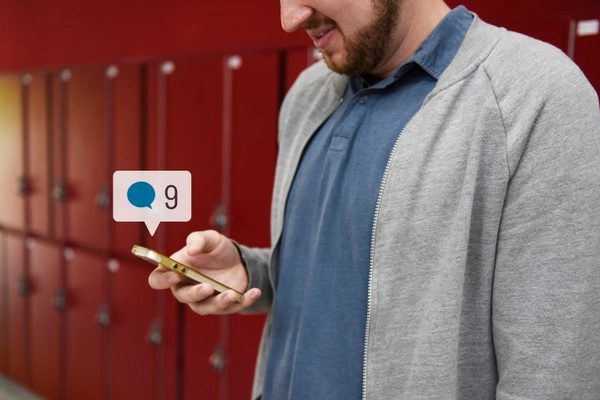
LinkedIn Marketing: Commenting on others’ posts with a few sentences or letting others comment on yours, even with just three simple things about themselves, can be a big step in creating connections and networks.
As you do that, LinkedIn is giving you credibility on the back end. You will also start to get new ideas for content as you start commenting on other people’s posts. That’s one of the most important things you can do. I set aside 10 to 15 minutes every day just to do that. If you don’t see the content that you want to engage with, you can use the LinkedIn search feature. Type in something about your career, whether it’s investing or fundraising.
When you do that, you’re going to see a list of posts that were made. Go in and find something that you can relate to, that you can leave a meaningful comment on. Not just great posts with a thumbs up but a sentence or two that gives your perspective on it. That’s what’s going to give you credibility and will do amazing things for your personal brand.
Most people think they like to like things or, “Great post.” Leaving a thought, whether you’re commenting in somebody else’s or you’re sharing an article over LinkedIn a bit what’s going on 6 inches between the ears. It’ll add a lot of value to the platform. Is there anybody that you’re following that you love to follow on LinkedIn on a daily basis or somebody that you’re like, “I like their content and information?”
There are so many. If I had a list prepared, I could share them with you but there’s a lot. I wish I could think of just 1 or 2 off-hands at the top of the list. There are some good ones out there. I could send you a couple of links that would be easy to download. I can give you 5 or 10 popular folks that are putting out amazing content.
What you guys are doing with Ducks Unlimited and spreading the word, conservation, hunting, and other things like that out there, your message weens through all this stuff on a regular basis going back and looking at stuff there, have you seen any controversy? Have you seen any trolls jumping on there to go against you or sharing anything negative by any chance?
There are always trolls. You’re never going to get away from them. Typically, if a troll shows up in a comment, I leave it alone or I’ll laugh at it and let the network come in and defend me or defend that position instead of me trying to get into a personal battle. That’s a no-win situation most of the time. That doesn’t happen very often. Fortunately with our mission, what we do and the content that we put out on our company page on LinkedIn, it’s very mission-centric. It’s donor-focused. There is not a lot of controversies to be had in a lot of that content.
Let your followers or your LinkedIn family defend it. You can’t win an argument with an idiot, is what I always like to say. What’s the biggest surprise that’s happened in the last years with you in your LinkedIn strategy? Anything popped up speaking opportunity, connection or conversation, an ah-ha moment like, “That’s pretty freaking cool.”
It’s the lessons that I’ve learned. It’s the people that I’ve met. The CEO of NextAfter, their executive team, I met them a few years ago at an NIO conference. He came up and found me in the crowd. He said, “I’ve been following you on LinkedIn. I wanted to meet you.” We’ve gotten to be friends. He invited me to speak at the NIO summit. That’s led to a couple of other speaking engagements. It’s like I mentioned in the presentation, you don’t know what opportunities are going to come up once you start building your brand.
It could lead to promotions, new career opportunities, speaking engagements, partnerships, podcasts interviews or even a side business that I’ve started doing some LinkedIn consulting on my own. There are so many benefits. I like to tell people, “You don’t know what they’re going to be until you get started but you got to take that step.” The worst time to start building your brand or where you want to build a network is when you need it.
You want to start doing that before you need it. In times of a global pandemic, an economic crash or something. If you have built up a network or a personal brand, if something happens to your job, your company or whatever, it gives you opportunities because you’ve built a foundation. You’ve got a strong network out there and it can be invaluable in times of distress.
You hit the nail on the head there, Anthony, the worst time is when you need it. It’s like investing in your future, start socketing away that branding and momentum. That way, it can easily be pivoted if you need to job loss, change economic meltdown. What’s a big pet peeve or big mistake you see people doing on LinkedIn besides the cold pitches on an introduction?
Those are the worst. A couple of pet peeves, one is when you do post something that’s showing your personality, something that’s fun. My favorite trolls are the ones that say, “This belongs on Facebook.” “This isn’t Facebook.” Usually, someone will come to your defense and say, “Get a life. If you don’t like it, you can unfollow me, block me or do whatever you want to do.” That’s one pet peeve.
Those people don’t understand how LinkedIn is used now. There’s thinking of it as the LinkedIn of years ago and the platform has evolved beyond that. The other one is when people blindly re-share stuff, whether it’s a motivational quote or whatever with no context. That content isn’t being seen. It’s not that valuable. What’s valuable is your original thoughts and perspective.
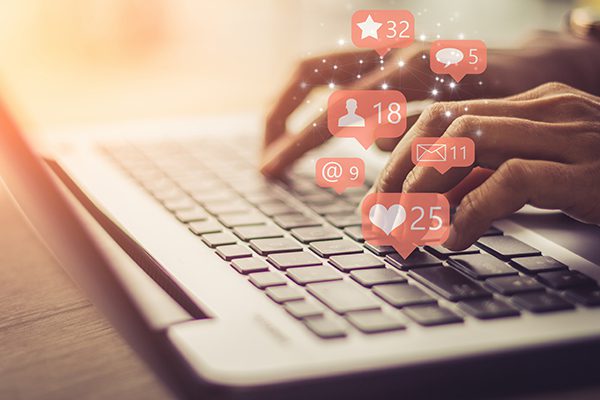
LinkedIn Marketing: You can leave a meaningful comment on not just great posts with a thumbs up. That’s what’s going to give you credibility and will do amazing things for your personal brand.
The blind sharing or the daily motivational quote without any comments. It’s set up through Hootsuite or Buffer just automatically share it. It doesn’t add a lot of value. It’s being passed over on a regular basis. With Facebook them sharing, the whistleblower coming out talking about the negativity of their platform or high night things, have you talked with your team about how important it is to make sure that you own your content or that you’re cross-promoting much more efficiently or effectively in a lot of cases to avoid things like that to happen in case things go down?
We have had some conversations. We are fortunate and that over the years, we’ve worked to build a strong following across all the social network platforms like Facebook, personally, it’s not my favorite but we generate more revenue from membership and so forth because of the paid ads. It’s the most effective advertising platform in the world, whether you love it or hate it, it’s effective. We also recognize that usage on that platform is going down a bit.
It may go down even further based on whatever comes out of all this taking place in the media. Having diversity in your social networks but also not putting all your eggs in the social media basket. We’ve got a very comprehensive email list. If Facebook went away, for whatever reason, we still have plenty of channels both digitally and offline to generate revenue for the organization. Not putting all your eggs in one basket. Common sense there.
You would hope it’s common sense but common sense is not always common these days. I have friends that I’ve been their whole platform and when it went down, they were literally panicking and having a meltdown because their marketing is at a standstill for a lot of things. There are people launching events. That aspect is not there for a time and stuff like that. It’s good to be stretched out and spread out. There are so many people like, “I need to be on LinkedIn more.” It’s one of the things they’re like, “I’m on Facebook, but I need to spend more time on LinkedIn.” Don’t wait. If there was ever a shot across the bow to do something, it happened Monday. Question for you, do you have kids, Anthony?
We have two boys.
How much are you monitoring, talking with them or limiting some of their social media activity or actions on there? Does that concern you a bit sometimes with what’s going on?
It’s something we try to keep a close eye on. My fourteen-year-old, he’s getting at that age where he’s got to have some social interaction online and so forth. Nine-year-old, not so much, although he does have a YouTube channel that only we can subscribe to. He likes to put some videos out there. That’s fine but we locked that down pretty tight. It’s an issue that all parents face. Everyone has to address it differently with their kids based on so many different variables. It’s very real. It can be very dangerous, as we all know, for a lot of different reasons. When I was growing up, that was one issue that my parents didn’t have to worry about. That’s the way of the world.
Our wall was running into a wall, playing recess outside, playing soccer, going hunting in the yard, playing basketball or football. It’s a whole different social media aspect than it ever was when we were growing up. That’s the true thing.
I’m an avid duck and deer hunter. I’ve taken my kids since they were old enough to go with me. Both of them enjoy going, my youngest in particular. It’s hunting season. It’s right around the corner. I’m stoked. Anything I can do to get them outdoors and away from the devices, away from all the digital stuff is a great thing. I enjoy it. They enjoy it. I hope more people do that this fall, this winter.
It’s a mental health break and mental wellness. Getting outside and doing some things, even if it’s 5, 10 minutes. My favorite moment of the day is walking outside around my plants. I’m in Austin. We’re not hunting deer or ducks here in Austin. It’s getting outside, unwinding, taking away the break and going from there. That’s beautiful stuff there for you. What’s the best way for people to connect with you? Is there a LinkedIn or any other way, Anthony?
Look me up on LinkedIn. Also, I have a new course that I’ll be launching soon. It’s BuildYourBrandOnLinkedIn.com.
We got to talk about that. Let’s share a little about that.
I’m working on a course. We’ll be launching. If you go to that URL, there will be some pre-sale opportunities with the discount. It’s unpacking everything that I’ve learned over the last couple of years, putting that into a course that will be affordable. Regardless of your career or your industry, it will give you the building blocks and the tactical things you can do to start building your brand. Looking forward to getting that out there for sure.
What’s the URL one more time for everybody?
It’s BuildYourBrandOnLinkedIn.com.
Anthony, thank you so much for coming on the show and sharing this valuable information, tips, and tools in how you’ve built an amazing brand and following on LinkedIn. It’s very applicable to what you talked about can be applied to whether it’s a nonprofit, a for-profit, a business, a personality. It’s a matter of showing up and doing it every day regularly. Take Anthony’s advice. Check out the URL. Check out his class. This guy is very unassuming but he shared so many good things on LinkedIn. This guy knows his marketing, LinkedIn and you can learn a lot from a Duck. I’ll tell you that, everybody. Go out. Take some action. Connect with Anthony. We look forward to seeing you on the top.
Thank you, Scott. I appreciate it.
Important Links:
- Ducks Unlimited
- LinkedIn – Anthony Jones
- SPINCon
- Nonprofit Innovation & Optimization Conference
- ShieldApp.ai
- InShot
- Teleprompter for Video
- NextAfter
- BuildYourBrandOnLinkedIn.com
About Anthony Jones
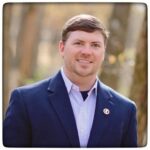 Anthony Jones is the Director of Digital Media & Marketing for Ducks Unlimited, the world’s leader in wetland and waterfowl conservation. For the last 19 years, he’s led a team responsible for the organization’s website, social media, email marketing, online fundraising, and mobile applications.
Anthony Jones is the Director of Digital Media & Marketing for Ducks Unlimited, the world’s leader in wetland and waterfowl conservation. For the last 19 years, he’s led a team responsible for the organization’s website, social media, email marketing, online fundraising, and mobile applications.
Anthony is also a highly recognized face on LinkedIn. Since 2016, he’s worked to build his brand through a unique content marketing strategy. He now shares many of these tips for free on his LinkedIn profile. He also provides consulting and coaching services, helping people transform their profile pages into powerful brands for themselves and their organizations.
Anthony is also launching a new online course in December called “Building Your Brand on LinkedIn” and is currently offering a pre-order discount to a limited number of customers. Learn more at http://BuildYourBrandOnLinkedIn.com

